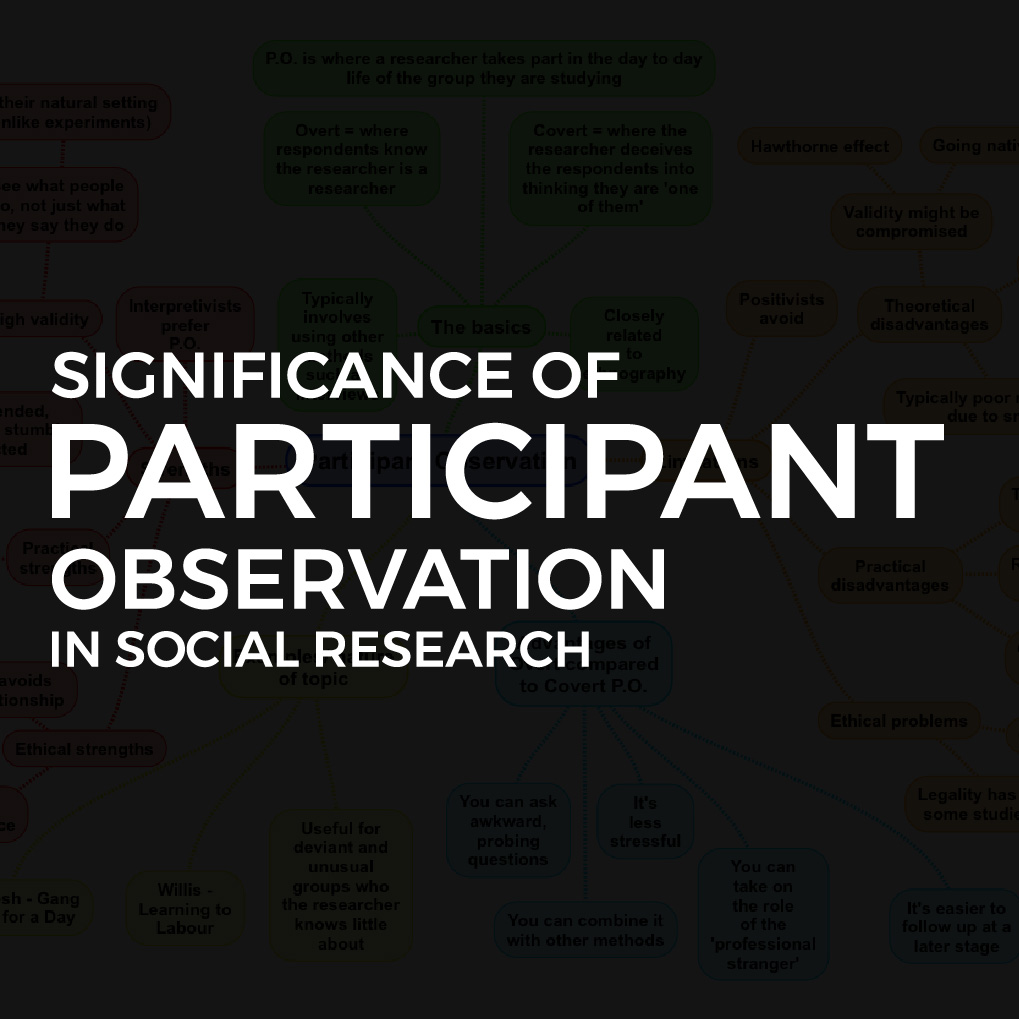Table of Contents
In the Participant Observation research is where the researcher physically joins the society or the group He or She wants to study and observe the behavior.
In this article, we shall cover all the practical, theoretical, and ethical strengths of participant observation. And, we will also the limitations of using overt and covert participant observation methods in social research.
The Participant observation and ethnographic method are closely related to each other. The ethnographic method consists of a deep study of the social and cultural life of a group of people in a particular area.
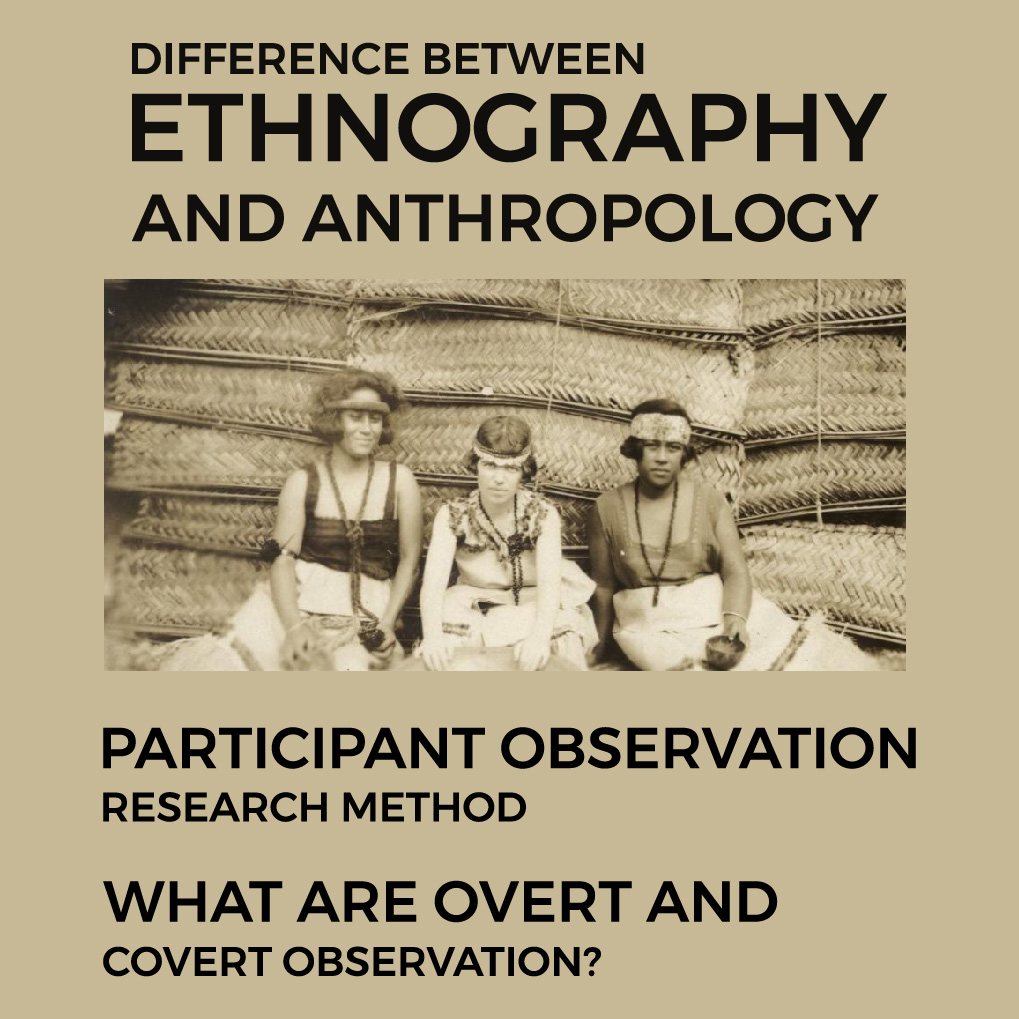
Difference between Ethnography and Anthropology:
They are traditionally associated with each other. The anthropologist usually visits a foreign land or country in simple words. They gain access to a native group, for example, a tribe or village or a town. And they spend several years living with them and involving in each and every activity to know more about their cultural and social norms.
The aim of Anthropologists is to uncover the culture.
The ethnographic method, however, is slightly different from anthropology. It involves watching what participants do or visual observation. It also involves listening to them, engaging in conversations probing about them, joining them in everyday tasks as necessary.
The ethnographic method also involves the investigation of cultural artifacts. For example, the artwork, any written work of literature, and also analyzing the religious rituals and popular local stories that can tell us about the culture.
Ethnographic research involves taking field notes, and the resulting ‘monographs’ which can take several months to be produced, if not a year.
In short words, the definition of ethnography is the same as the definition of participant observation. But ethnography involves writing a detailed account of the researcher’s findings. The formula for ethnography is mentioned below:
Ethnography = participant observation + a detailed written account of one’s findings.
Participant Observation Research Method
Most of the researchers or participant-observers/ethnographers try to combine their observations with other methods, for example, unstructured interviews.
Some combine them with formal questionnaire-based/survey-based research.
Normally, many of the studies mixed research methods. Still, the Participant Observation is technically classified.
What are Overt and Covert Observation?
Covert and overt observation are two observing techniques that are employed when conducting research or observation for a society or group of people.
There is a clear difference between covert and overt observation.
Overt Observation: In overt observation, the group knows they are being observed. The people are aware of the observation is going-on. Studying their culture, behavior, and social norms.
Covert Observation: this is where people do not know that they are being studied or observed. The research or observation goes in undercover.
both covert and overt observations have their strengths and limitations. The Overt research is ethical because of the lack of deception factor. It also allows the researchers to ask questions and use other research methods.
Covert research is a good research method when you want to gain access to deviant groups. It enables you to gain full absorption into the native culture and avoids the ‘Hawthorne Effect’ or in simple words, people might begin to act differently knowing that they are being observed. This practice is ethically unsuitable and it involves deception. It can be very hard for the researcher.
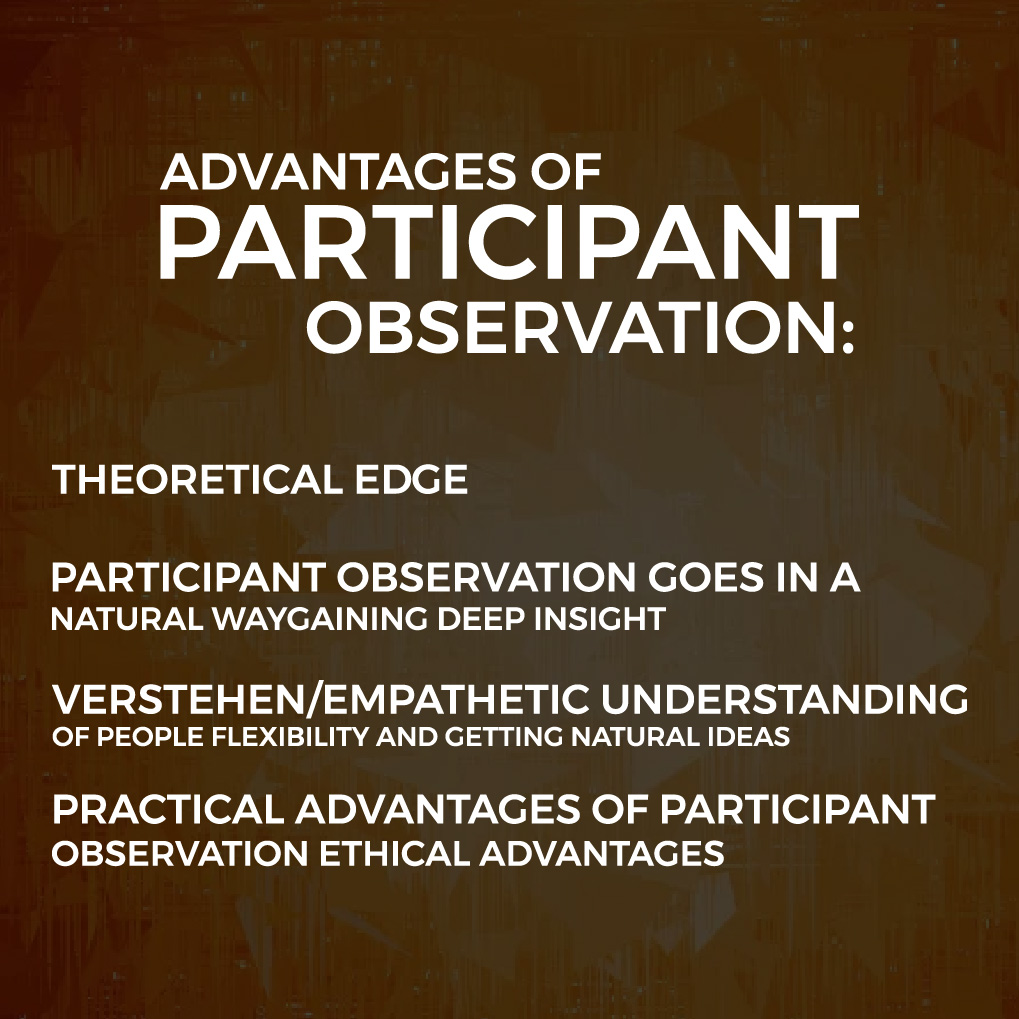
Advantages of Participant Observation:
Theoretical Edge
There is a significant strength of both types of participant observation methods is The most significant strength of both types of participant observation is the degree of validity that is achieved.
There are five reasons for this:
You observe what people actually do, not what people say they do:
This reason is quite significant in participant observation because it allows the researcher to see and observe what people actually do rather than what they say they do.
Participant Observation goes in a natural way:
This simply means the respondent or the subjects of observation acts more naturally than in a laboratory. People actually behave very well during a formal interview.
This means the probability of the Hawthorne effect will be less than normal, especially when the covert research is conducted. You also get a natural response in the actions of people in a particular situation. Which might otherwise seem to lack in people if it is conducted in an artificial research environment.
Gaining Deep Insight:
The more time you spend with native people the more information you can get.
This can help establishing closer bonds with people and digging deep into the culture and norms of the society and to widen the circle of research which was otherwise impossible with the conventional survey method.
This enables you to find out facts that may be hidden from all other research methods.
Verstehen/empathetic understanding of people:
In this method, the researcher puts him/herself in place people. This allows the observer or the researcher to feel the thoughts and feelings as his own.
By joining-in, the researcher gains empathy through the personal experience of people. This closeness can extract unique and authentic data.
Flexibility and getting natural ideas:
Even before collecting the data, the researchers decide what is important. Therefore, the researcher prepares questionnaires with pre-set questions.
Neglecting the idea that what if the questions researcher thinks are important are not as much important to the people.
On the other hand, the participant observation is much more flexible than a set of pre-set questions. This allows the researcher to practically step into the situation with an open mind. And, as new situations emerge the researcher can adapt.
Practical Advantages of participant observation:
There are some crucial practical advantages of this method, for example, if a researcher is using questionnaires to conduct research on street gangs is more likely to be seen as a member of a law enforcing authority and unlikely to be accepted.
On the other hand, if participant observation is adopted this research can be done very easily and can produce more unique, accurate, and factual data.
Ethical Advantages
In the quantitative methods, there is a possibility of getting a very formal and reserve answer from the people. But, participant observation, however, it allows the people to speak for themselves rather than establishing master- client relationship which cannot produce the data we require.
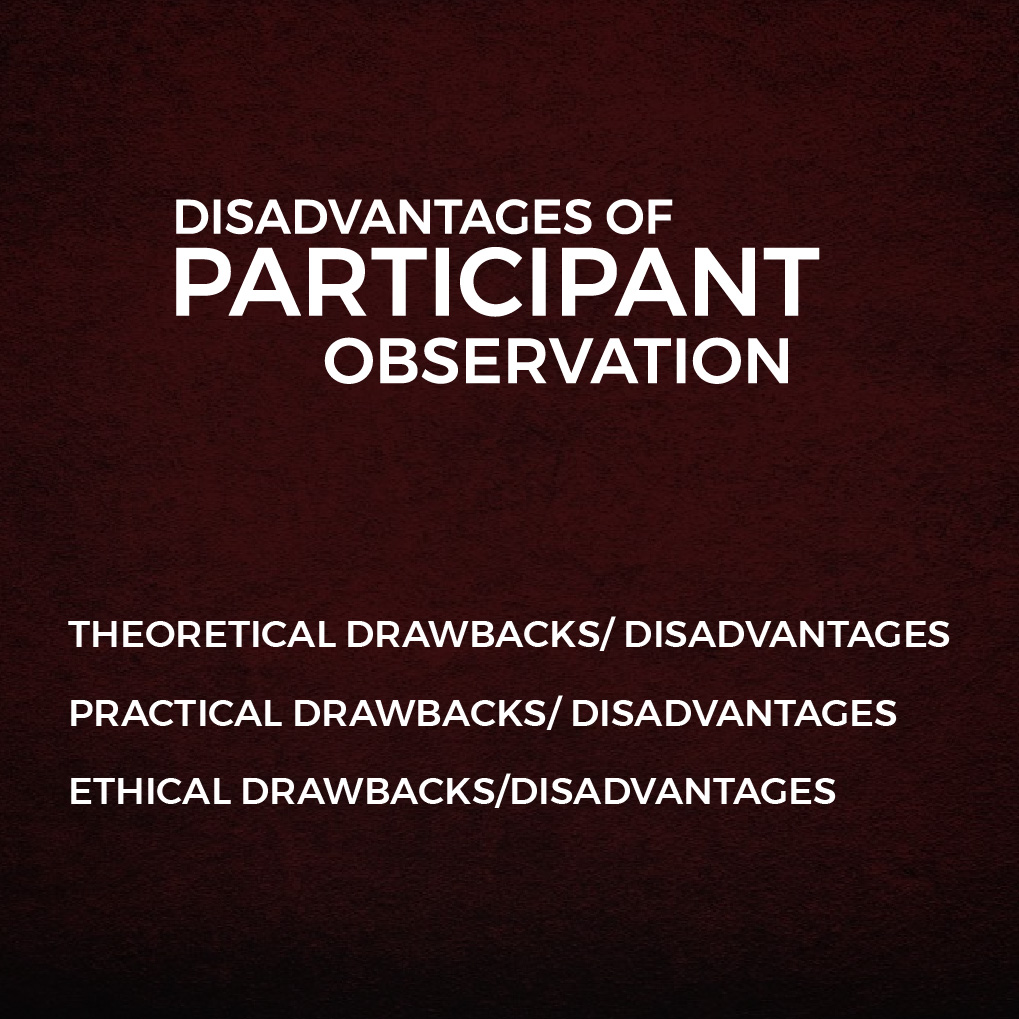
Disadvantages of Participant Observation:
Theoretical Drawbacks/ Disadvantages
A low degree of reliability is a major theoretical disadvantage. For other researchers, it would be almost impossible to repeat the given research because the participant observation study is the result of the personal expertise and characteristics of a particular researcher.
A low degree of representativeness is another theoretical disadvantage. Social researchers who use quantitative research methods carefully select the representative samples that provide a concrete basis for generalizations the research samples.
On the other hand, the samples used in participant observation are usually unrepresentative. The samples are accessed through the snowball sampling method and do not represent the entire targeted society.
Biasness is a factor that can nullify the entire participant observation. Critics questions how valid participant observation really is?
They argue that the method is not objective. There is a chance for the researcher to avoid subjectivity and forming biased views. It also depends on the values of the researcher what he finds valuable.
Hawthorne Effect is another threat to the validity. People begin to act differently when they know they are under observation.
The method also lacks the concept of social structures like class or gender. By keeping focus on a single participant’s interpretation the researcher is prone to ignore the wider perspective.
Practical Drawbacks/ Disadvantages
This method is expensive and time taking. It can take a lot of time for the researcher to gain the trust of the respondents. This is a long endeavor until it begin to bear any fruit.
Participant Observation requires a special observational and interpersonal skills. Through which the researcher can decide when he/she has to back off and when to probe into the information.
Covert observation can be really tough sometimes. Gaining access is not easy everywhere. Many people will not allow the research to be conducted this way.
Ethical Drawbacks/Disadvantages
Ethical disadvantages are mainly related to Covert Participant Observation. Where respondents are secretly deceived and cannot give full information openly in the research.
Covert participation observation can raise the question of legality. It can become an issue where researchers working with deviant groups may have to involve in illegal acts to maintain their cover.
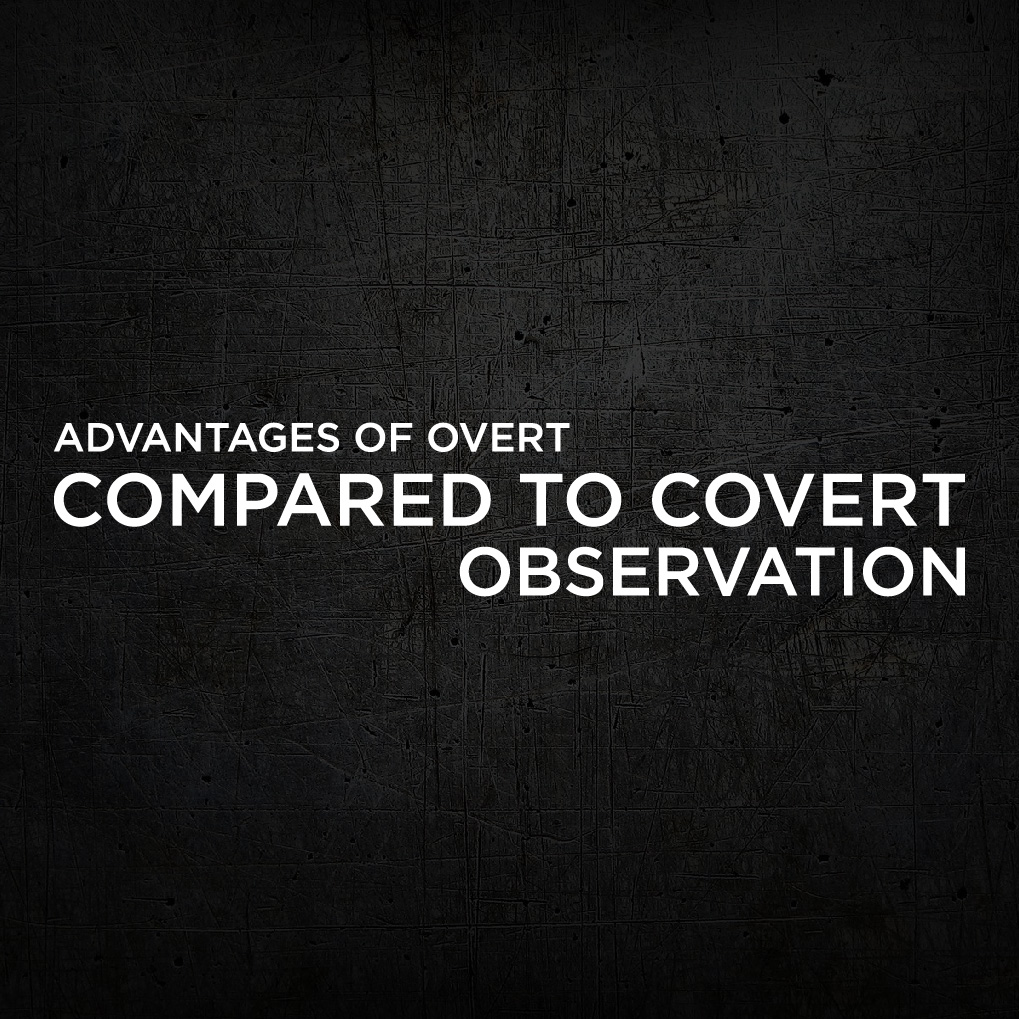
Advantages of Overt compared to Covert Observation
There are five important reasons why overt participant observation might be a better choice for research:
- You can ask awkward, investigating questions
- It can be combined with other methods
- You can be a ‘professional stranger’ – respondents may tell you some things knowing that are not ‘one of them’.
- less stressful and less risky.
- easy to do follow up studies.

